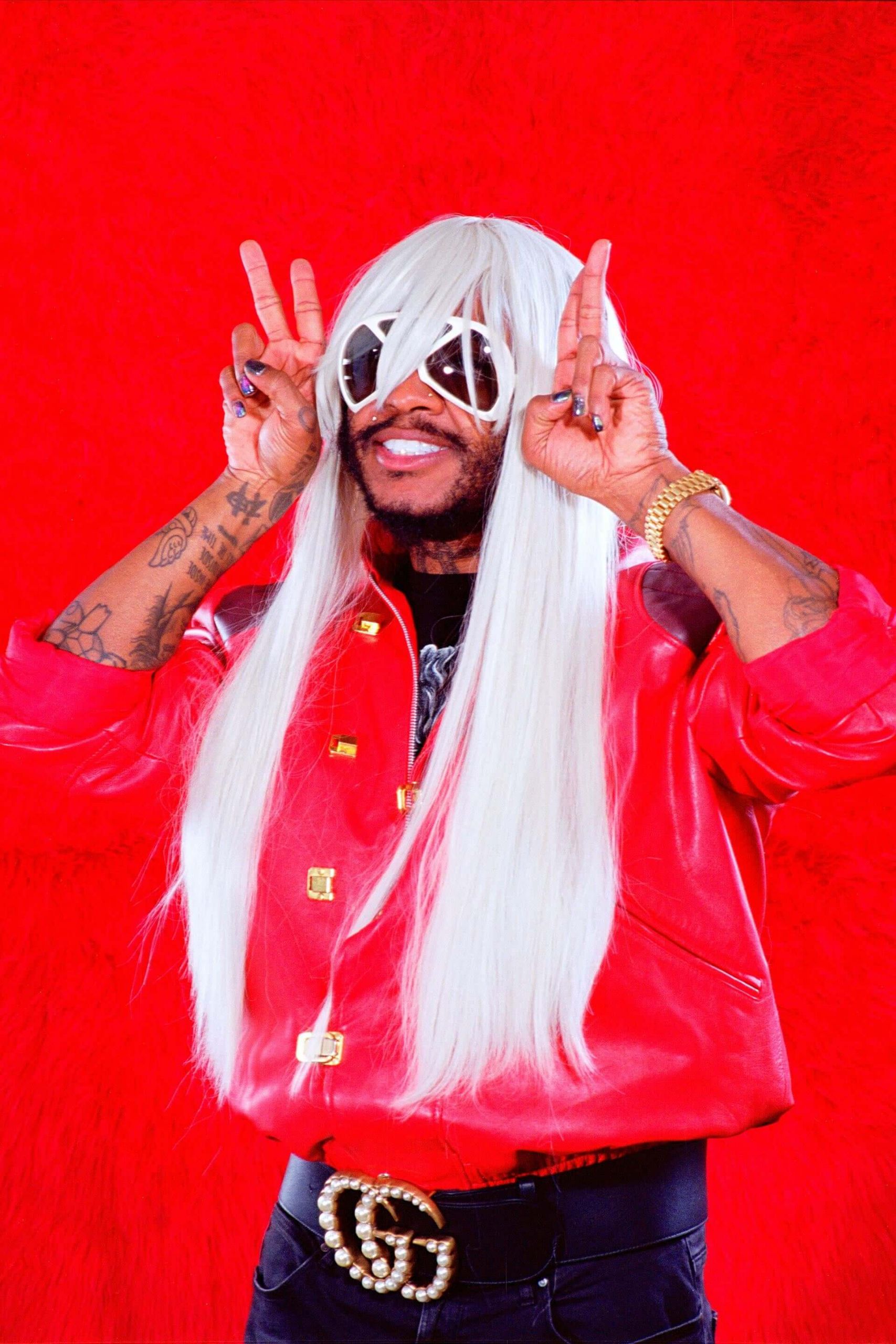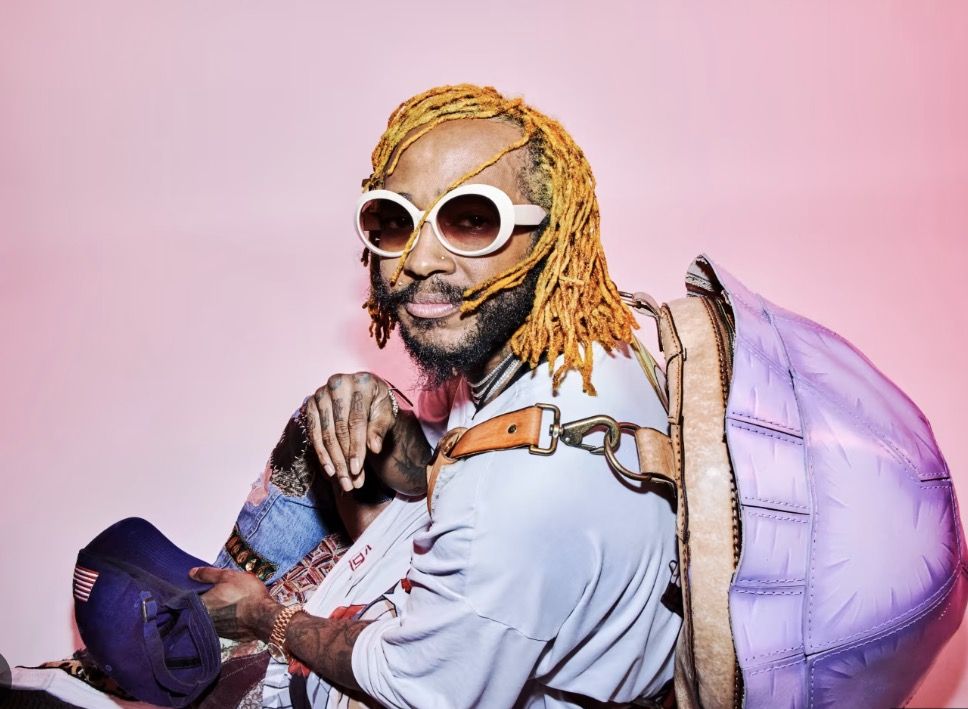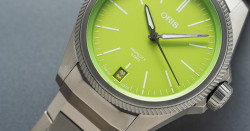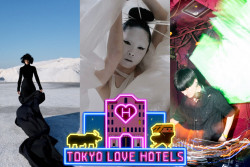
June 29, 2023
Through the Eyes of Thundercat
The Grammy-winning musician shares his passion for anime, music and tips for Tokyo
By Mike Smith
For many visitors, Japan is more than just a destination: it is an experience, a journey, a discovery. As summer and millions of incoming tourists approach, Metropolis caught up once again with the subject-matter expert himself, Thundercat, about what makes traveling to Japan so special for him.
Metropolis: My condolences for the loss of Ryuichi Sakamoto. You mentioned he was one of your favorite musicians and has played a direct role in some of your music. Do any of your influences from Sakamoto come to mind as you work on your next album?
Thundercat: He has always been there. I remember the day I was introduced to his music. I was at my friends Cameron and Taylor Graves’ house. We would practice or like personal commodities and stuff. Their father Mr. Graves would always play stuff that he was involved with; he would always show us amazing music. One day, we watched a copy of the 1992 Olympics that he had on tape and I heard Ryuichi’s song “El Mar Mediterrani” for the first time. It blew me away. It was such a beautiful tune.
Years later, I used a sample of that song for the ending of my album “Apocalypse”. [This was a tribute to Thundercat’s friend and pianist Austin Peralta, who passed away]. The lyrics for “Message to Austin / Praise the Lord / Enter the Void” just came out of me spontaneously when I was recording with Flying Lotus. It was very emotional and hard to get through, but I felt like I had to do it.
Ryuichi gave me his blessing to use the sample because he knew who Austin was and he respected him. That meant so much to me. He was very kind and generous. I met him in person after I went to Japan with Flying Lotus, right after Austin died. Ryuichi was playing a show in Osaka and we went to see him. He met Lotus first and then I met him at a different time. He was very sweet and open. He stayed in touch with us over the years and he came to some of our shows. He even performed in LA after 10 years of not performing and we got to see him.
M: What was the creative process like for putting your spin on “Thousand Knives”?
T: I love Ryuichi’s music, and I was given a lot of freedom to choose a song to cover. I decided to go with “Thousand Knives” because it’s one of my favorites. It has this long intro with him talking with a vocoder and then it kicks in with this funky groove. It felt like some “Adventure Time” shit. Ryuichi had his own style and his own sound. He was not just a composer or a member of YMO (Yellow Magic Orchestra). He was a funky dude and I relate to that. I’ve always been a child of the funk.
“Thousand Knives” also has this dark and mysterious vibe that I like. The album cover shows him about to drop a light bulb in the bathtub. It’s like he’s saying “Kill me now.” It makes me wonder what he went through in his life and what he was feeling when he made that song. I tried to capture that in my lyrics. I wrote about “a thousand knives for a thousand lives” and “having died a thousand times.” It felt right to me. It felt like I was connecting with him on a deeper level.
M: Speaking of memorable collaborations with Japanese artists, you dropped a new shoe collab last month with MUTSU. How was that experience?
T: I love fashion; I love clothing. I love the idea of shapes, colors and sizes coming together. There is no end to what fashion can be. I’m a very big fan of Prospective Flow and MUTSU’s work. I bought a lot of his clothing before we linked creatively. When he suggested collaborating, we both got excited. We have a good dynamic because he gets inspired by me and I get inspired by him. He even asks for my input sometimes, which is amazing. He also brings out some parts of me that are influenced by Japan. I love what we create together and I think they are very special and expressive. There’s going to be more in the future for sure.
M: Have you added any new manga or anime into the rotation recently? Or are you still going through Naruto again?
T: No, we’ve been watching “Hell’s Paradise” over here, homie. When you see that Mappa brand right in the beginning you go okay, I need to pay attention. The animation, the character development and the concept are all good. We’re only four episodes in, but we’re hooked. It’s got a vibe.
I wonder how Japan feels about how much everybody romanticizes the Edo period or the time of the ronin, samurai and all that stuff. It’s like a good old Western film where you see Clint Eastwood—nobody can tell Japanese stories like Japanese people can, no matter what the case is. So I like it when I see those little mythical stories they create; I get really enthralled by what they do with the characters. It’s all drawing from that older period of Japan’s culture, which is really cool.
M: On the topic of anime, have you visited any iconic real-world locations from any anime?
T: Rest in peace to the Gundam Cafe. It’s unfortunate to realize that nobody’s ever going to get to see the Gundam Cafe unless you got the chance to see it already. That was one of the joys of my heart just to go there. Next time, I want to get on that “Evangelion” train.

M: Have you been able to go to the Naruto Shinobi Village?
T: This is what’s messed up. Every time you go up there, they make this shit the actual
“Ninja Warrior” challenge to get to it. I understand they made it “Naruto” land and it’s just for kids, but I still think that’s ass. To get there is a trek. You have to disappear for like, two days to go see it. Personally, I feel attacked. Yes, you got the kids that love “Naruto” but like, I’m not rolling around wearing the whole hidden leaf village outfit for nothing. Next time I get there. I’m 100% going,
there’s no mistake.
Oh, and with the giant Gundam, they’re literally getting rid of it next summer, that’s not fair! The world hasn’t got to see it yet. You guys have to leave that up for at least a decade. My nose is going to start bleeding. I’ve got to calm down.
M: You came through last time with the Master Roshi drip. Do you think any other characters have good taste in fashion?
T: This is the dope thing about anime, it’s got its own life. From the Hidden Leaf ninja and their uniform to “Nana” characters being clothed in Vivienne Westwood, it inspires cosplay. When you see what just happened with these Astroboy boots, you just got to think, all the nerds have money now. So that’s what’s happening.
M: Any tips for clothes shopping in Tokyo?
T: No, I like to gatekeep. I want you to struggle if you don’t know where to go in Japan. That’s your problem. No, no, just joking. My tip would be don’t just be squeamish. Your eyes are going to get really big when you see what Japan and Tokyo have to offer the world when it comes to fashion and everything.
M: What’s it like knowing that you have the biggest otaku flex of all time, since you were featured in an issue of “Shonen Jump”?
T: You know, that will also be on my headstone. Here lies Thundercat, I’m not even going to have my real name on there, he was in Star Wars and he was a “Shonen Jump”… and he smelled good.
M: Ok, your house is on fire, and you have time to grab one anime statue. Which one are you going for?
T: I’m going to just burn in the house with everything. I can’t make a choice like that, there is too much cool and killer shit here. I will just sit there and let the pain kick in.
M: If you had to sample any specific Japanese sound for a new song, whether it’s a train station jingle or a shop attendant yelling irasshaimase, which one do you think would work out best?
T: The lady’s voice that’s really soft when you walk through the 7/11 doors or the sound that plays as you get on the train. I mean, well, that’s what Yoko Shimomura did with “Street Fighter,” but yeah.
Oh, and the sound of all the billboards playing in Shibuya Scramble, the music and everything playing at the same time. I love that sound.

M: You got to relax and enjoy your tourist-free trip to Japan the last time you came. Were there any places you visited in Tokyo that you know you will return to besides Nakano Broadway?
T: I have a few go-to spots. The piano bars are legendary. Or the DJ Bar Bridge. I also love stopping at the Capcom store.
M: In your last interview with Zane Lowe, you talked about how being healthier has made you take a different approach to being creative. Have your experiences with traveling in Japan changed as well?
T: I have always had a love for Japan since I was a kid. I think that the thing that did change me was coming to Japan. When I was in a different state, I realized how much of it I was missing because I was buried in this other type of emotion. Once I stopped drinking, the one place I wanted to go was Tokyo. You know, emotionally I can’t look back once in my life and think of a time I went to Japan and it wasn’t the happiest or most solemn moment in my life.
M: Of all the musicians you have worked with, who would be the best person to travel around Japan with?
T: Leon Ware. One of the most unforgettable times in my life is coming to Japan with Leon Ware. To this
day, I’ve traveled around the world for many years, but I still love that trip. The feeling of being in Japan when I was 18 with somebody that I really, really looked up to musically was one of the best experiences I’ve ever had in my life traveling. I still talk about that trip with my friends.








